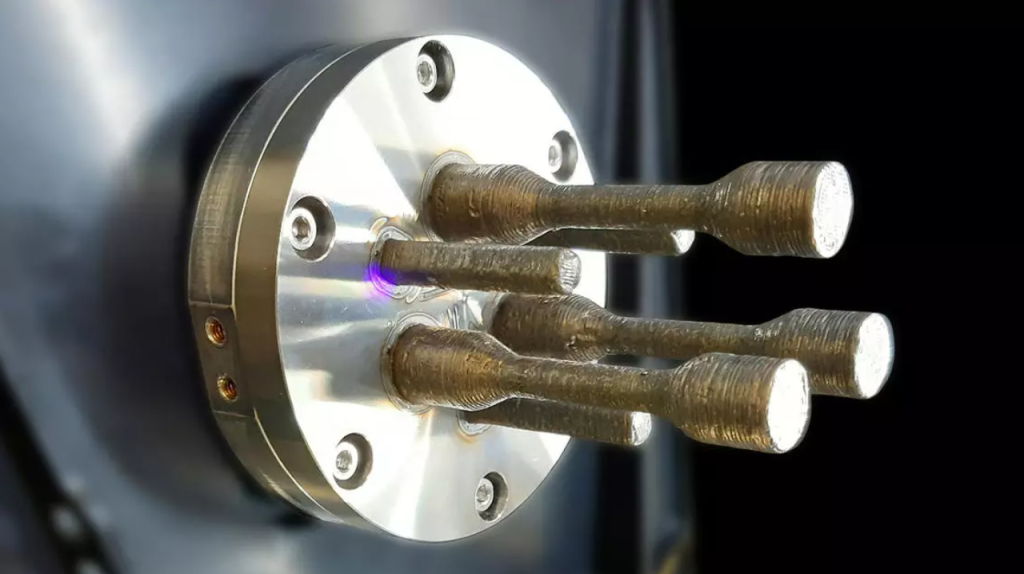In collaboration with Airbus Defense & Space, AddUp has developed a metal 3D printer intended for space applications under the European Space Agency (ESA) contract.
This system, co-funded by Airbus Defense & Space, is designed to evaluate the capabilities and performance of additive manufacturing under sustained microgravity conditions. The metal 3D printer was launched on January 30, 2024 by NASA’s NG-20 mission towards the International Space Station (ISS). As part of the “Metal3D” project, this system will be tested on board the Columbus module of the ISS. According to Airbus, operational printing operations are expected to begin in late February or early March.
Sébastien Devroe, Technical Director of AddUp, said: “The development of the metal 3D printer is based on the unique multidisciplinary expertise of AddUp’s engineers and researchers. Our employees have expertise in a variety of additive manufacturing processes, machine design, programming and operational optimization. Our teams have supported the development of this first space metal 3D printer, which will soon be in orbit. The metal 3D printer was designed and optimized to suit the conditions and environment of the International Space Station.”
 First of four 3D metal specimens to be printed aboard the ISS. Photo via Airbus.
First of four 3D metal specimens to be printed aboard the ISS. Photo via Airbus.
Testing the Feasibility of Metal 3D Printing in Space
The “Metal3D” project started in 2016 when Airbus Defense & Space received the contract from ESA. The main goal was to develop a metal 3D printer that could operate in zero gravity conditions on board the ISS.
While polymer 3D printers have been in use on the ISS since 2014, allowing astronauts to produce and replace plastic parts, the introduction of a metal 3D printer opens up new possibilities. According to Airbus, the logistical challenge of supplying space stations with equipment will be even more noticeable on future lunar and Mars missions. The ability to manufacture parts in space could significantly reduce reliance on Earth-based supply chains.
However, the transition from terrestrial to space-based metal 3D printing presents unique technical hurdles. Sébastien Girault, systems engineer for metal 3D printers at Airbus, outlines two main challenges. First: miniaturization of the printer to adapt it to the requirements of the ISS, reducing it from the typical size of ten square meters to the size of a washing machine.
Secondly, safety must be ensured by placing the printer in a sealed metal case due to the high heat generated by the laser. Metal alloys have a much higher melting point of over 1,200 °C compared to plastics at around 200 °C, requiring strict thermal control. Additionally, Girault emphasizes the importance of gravity management, opting for wire-based printing to mitigate the effects of gravity, as opposed to powder-based systems.
On-demand manufacturing in space
The upcoming experiment involves the use of two 3D printers: a “flight model” on board the ISS and an “engineer model” on Earth. Astronauts will print four samples in space, which will be returned to Earth for analysis along with samples made using the engineering model. Mechanical strength, bending tests and microstructural analysis are performed to evaluate the effects of microgravity on the printed parts.
Airbus expects that metal 3D printing on the ISS will improve understanding of the quality of metal printing in space and provide valuable insights for the operation of such printers in extraterrestrial environments. According to the company, this technology is a critical step toward establishing a sustainable human presence on the moon and beyond.
“To assess the effects of microgravity, ESA and the Danish Technical University will carry out mechanical strength and bending tests as well as microstructural analyzes on the parts manufactured in space and compare them with the other samples,” Girault added.
3D printing improves space manufacturing
The use of additive manufacturing for space applications has become increasingly important in recent years. 3D printing in space offers the potential for resource-efficient manufacturing, increased adaptability and cost reduction in space missions. A notable example of AM in space is Redwire’s 3D bioprinting of a human knee meniscus on the ISS using its modernized 3D BioFabrication Facility (BFF).
The printed meniscus returned to Earth for analysis following 3D printing operations in July last year on SpaceX’s Crew-6 mission. This achievement aims to improve the treatment of meniscus injuries, which are particularly common in U.S. soldiers, and was conducted as part of the BFF Meniscus 2 investigation with the Uniformed Services University’s Health Sciences Center for Biotechnology (4D Bio3). . NASA astronauts Frank Rubio, Warren Hoburg and Stephen Bowen, along with UAE astronaut Sultan Al Neyadi, conducted this ISS-based investigation.
As part of the AstroCardia project, a consortium of Belgian companies and research centers worked together to send a 3D printed “heart on a chip” to the ISS. The 3D bioprinted artificial heart and circulatory system is scheduled to be launched into orbit in 2025 and is being developed by Space Application Services, SCK CEN, QbD Group, BIO INX and Antleron. The aim of this initiative is to enable scientists to better understand the aging process of the heart, as the organ ages 20 times faster in microgravity conditions.
What 3D printing trends do industry leaders expect this year?
What does the future of 3D printing look like in the next 10 years?
To stay up to date with the latest 3D printing news, don’t forget to subscribe to the 3D printing industry newsletter, follow us on Twitter or like our page on Facebook.
While you’re here, why not subscribe to our YouTube channel? With discussion, debriefings, video shorts and webinar replays.
Are you looking for a job in the additive manufacturing industry? Under 3D printing jobs you will find a selection of positions in the industry.
The featured image shows the world’s first space metal 3D printer heading to the ISS. Photo via Airbus.
